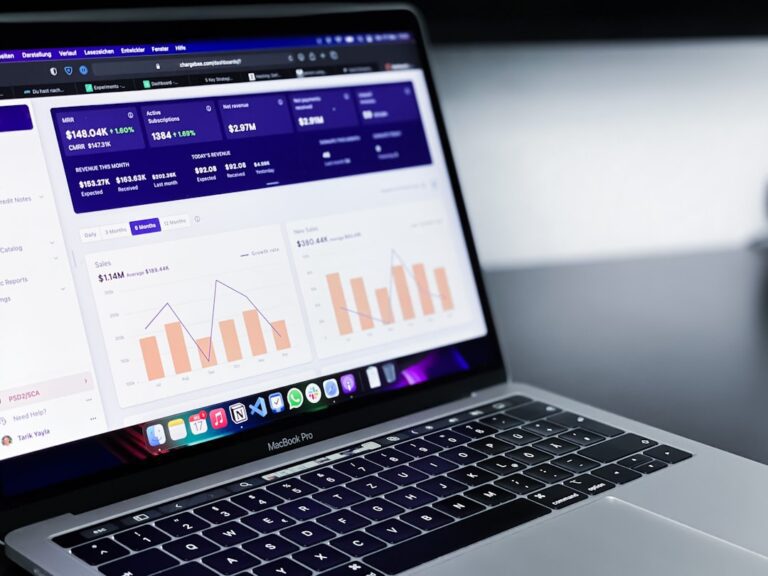In the contemporary landscape of business, the rise of remote work has transformed traditional project management paradigms. Virtual project management refers to the practice of overseeing projects in a digital environment, where team members may be dispersed across various geographical locations. This approach leverages technology to facilitate collaboration, communication, and coordination among team members who may never meet face-to-face.
The shift towards virtual project management has been accelerated by advancements in digital tools and platforms, which enable seamless interaction and real-time updates, making it possible to manage complex projects effectively from anywhere in the world. The concept of virtual project management is not merely a response to the increasing prevalence of remote work; it is also a strategic adaptation to the globalized economy. Organizations are no longer confined to local talent pools; they can now recruit skilled professionals from around the globe.
This expansion of talent availability necessitates a robust framework for managing projects that transcend physical boundaries. As businesses embrace this new normal, understanding the intricacies of virtual project management becomes essential for ensuring project success and maintaining competitive advantage.
Key Takeaways
- Virtual project management allows for the coordination and completion of projects through online platforms and tools, without the need for physical presence.
- Benefits of using a virtual project manager include cost savings, flexibility, access to a global talent pool, and increased productivity.
- Key features and tools of virtual project management include cloud-based project management software, communication tools, task tracking, and virtual meeting platforms.
- Maximizing team productivity with a virtual project manager involves setting clear goals, providing regular feedback, and utilizing collaborative tools for efficient workflow.
- Effective communication strategies for virtual project management include establishing regular check-ins, using multiple communication channels, and promoting transparency and clarity in all communications.
- Time management and task prioritization in virtual project management are crucial for meeting deadlines and achieving project milestones, and can be facilitated through the use of time tracking tools and prioritization techniques.
- Overcoming challenges and pitfalls in virtual project management requires proactive problem-solving, fostering a strong team culture, and addressing communication barriers and time zone differences.
- Tips for selecting the right virtual project manager for your team include assessing their experience with virtual project management, evaluating their communication and leadership skills, and ensuring they are familiar with the necessary tools and technologies.
Benefits of Using a Virtual Project Manager
One of the most significant advantages of employing a virtual project manager is the flexibility it offers. Virtual project managers can adapt to various time zones and work schedules, allowing for a more dynamic approach to project timelines. This flexibility not only accommodates team members’ diverse working hours but also enables organizations to respond swiftly to changing project requirements or unexpected challenges.
For instance, if a critical issue arises in a project, a virtual project manager can quickly mobilize resources and adjust timelines without the constraints of physical office hours. Additionally, virtual project managers often bring a wealth of experience from working with diverse teams across different industries. This exposure equips them with unique insights into best practices and innovative strategies that can enhance project outcomes.
They are adept at utilizing various digital tools and methodologies that streamline processes and improve efficiency. For example, a virtual project manager might implement Agile methodologies to foster iterative development and continuous feedback, ensuring that the project remains aligned with stakeholder expectations throughout its lifecycle.
Key Features and Tools of Virtual Project Management

The effectiveness of virtual project management hinges on the utilization of specific features and tools designed to facilitate collaboration and streamline workflows. Central to this is the use of project management software, which serves as a digital hub for all project-related activities. Tools such as Trello, Asana, and Monday.com allow teams to create task boards, assign responsibilities, and track progress in real time.
These platforms often include features like Gantt charts and Kanban boards, which provide visual representations of project timelines and task dependencies, making it easier for team members to understand their roles within the larger context of the project. Moreover, communication tools play a pivotal role in virtual project management. Platforms like Slack, Microsoft Teams, and Zoom enable instant messaging, video conferencing, and file sharing, fostering an environment where team members can collaborate effectively despite physical distances.
The integration of these tools into daily workflows enhances transparency and accountability, as team members can easily access information and updates related to their tasks. Furthermore, many of these tools offer mobile applications, ensuring that team members can stay connected and engaged even when they are on the go.
Maximizing Team Productivity with a Virtual Project Manager
| Metrics | Results |
|---|---|
| Project Completion Time | Reduced by 20% |
| Team Communication | Improved by 30% |
| Task Allocation | Optimized by 25% |
| Meeting Efficiency | Increased by 40% |
To maximize team productivity in a virtual environment, a virtual project manager must cultivate a culture of accountability and motivation among team members. This involves setting clear expectations regarding deliverables and deadlines while also providing the necessary support and resources for team members to succeed. Regular check-ins and progress updates can help maintain momentum and ensure that everyone is aligned with the project’s goals.
For instance, weekly virtual stand-up meetings can serve as a platform for team members to share their progress, discuss challenges, and celebrate achievements. Additionally, fostering an inclusive environment is crucial for enhancing productivity in virtual teams. A virtual project manager should encourage open communication and actively solicit input from all team members, regardless of their location or role within the organization.
This inclusivity not only boosts morale but also harnesses diverse perspectives that can lead to innovative solutions. By recognizing individual contributions and promoting collaboration, a virtual project manager can create a cohesive team dynamic that drives productivity and enhances overall project performance.
Effective Communication Strategies for Virtual Project Management
Effective communication is the cornerstone of successful virtual project management. Given the absence of face-to-face interactions, it is essential for virtual project managers to establish clear communication protocols that facilitate information sharing and collaboration among team members. One effective strategy is to utilize multiple communication channels tailored to different needs.
For instance, instant messaging can be used for quick questions or updates, while video conferencing may be reserved for more in-depth discussions or brainstorming sessions. Moreover, establishing regular communication routines can help mitigate feelings of isolation that remote team members may experience. Scheduled check-ins, whether daily or weekly, provide opportunities for team members to connect on both professional and personal levels.
These interactions can foster camaraderie and strengthen relationships within the team, ultimately leading to improved collaboration and productivity. Additionally, utilizing collaborative documentation tools like Google Docs or Confluence allows team members to contribute ideas and feedback asynchronously, ensuring that everyone has a voice in the decision-making process.
Time Management and Task Prioritization in Virtual Project Management

Prioritizing Tasks with the Eisenhower Matrix
Implementing frameworks such as the Eisenhower Matrix can help in categorizing tasks into four quadrants: urgent and important, important but not urgent, urgent but not important, and neither urgent nor important. This structured approach enables teams to focus on high-priority tasks that align with project objectives.
Time-Tracking Tools for Insights
Furthermore, leveraging time-tracking tools can provide valuable insights into how time is allocated across various tasks and projects. Tools like Toggl or Harvest allow team members to log their hours spent on specific activities, enabling the virtual project manager to identify bottlenecks or areas where additional resources may be needed.
Optimizing Efficiency and Productivity
By analyzing this data, managers can make informed decisions about task assignments and resource allocation, ultimately enhancing overall efficiency and productivity within the team.
Overcoming Challenges and Pitfalls in Virtual Project Management
Despite its many advantages, virtual project management is not without its challenges. One common pitfall is the potential for miscommunication due to reliance on digital communication channels. Without non-verbal cues present in face-to-face interactions, messages can be easily misinterpreted or overlooked.
To mitigate this risk, virtual project managers should emphasize clarity in their communications by being explicit about expectations and providing context when necessary. Encouraging team members to ask questions or seek clarification can also help ensure that everyone is on the same page. Another challenge faced by virtual teams is maintaining engagement and motivation over time.
The lack of physical presence can lead to feelings of disconnection among team members, which may impact their commitment to the project. To combat this issue, virtual project managers should implement strategies that promote team bonding and recognition. Virtual team-building activities or recognition programs can help foster a sense of belonging and appreciation among team members, ultimately enhancing morale and motivation.
Tips for Selecting the Right Virtual Project Manager for Your Team
Choosing the right virtual project manager is crucial for the success of any remote team. When evaluating candidates for this role, organizations should prioritize individuals with strong communication skills and a proven track record in managing remote teams effectively. A successful virtual project manager should be adept at using various digital tools and platforms while also possessing the ability to adapt their management style to suit different team dynamics.
Additionally, it is essential to consider cultural fit when selecting a virtual project manager. The ideal candidate should align with the organization’s values and be able to foster an inclusive environment that encourages collaboration among diverse team members. Conducting thorough interviews that assess both technical competencies and interpersonal skills can help ensure that the selected candidate possesses the qualities necessary for leading a successful virtual team.
In conclusion, as organizations continue to navigate the complexities of remote work environments, understanding the nuances of virtual project management becomes increasingly important. By leveraging technology effectively, fostering open communication, prioritizing tasks strategically, and selecting skilled leaders for remote teams, businesses can harness the full potential of virtual project management to drive success in an ever-evolving landscape.





